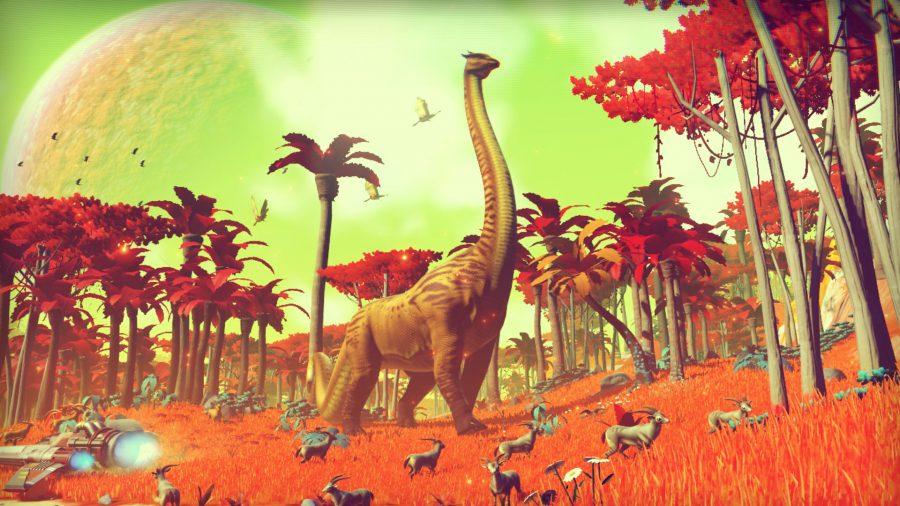As the rain continues to fall on Aeos, the explorer flees to his or her ship to escape not only the storm, but also the planet itself. This is just one of the many experiences within the galaxy of Hello Games’ “No Man’s Sky.”
“No Man’s Sky” is a procedurally generated open-world exploration game with 18 quintillion planets (18 with 18 zeros behind it), each random and containing a different and sprawling world to discover. Though the game’s plot centers on following the path of an all-seeing orb known as “Atlas” to the center of the galaxy, the game leaves itself open for players to ignore the path and explore at their own pace.
The game is a survival and crafting game at its core, though not as intense as others on the market such as “Rust” or even “Minecraft.” Players have meters to attend to, such as fueling life support and hazard protection, but the degradation of these meters is dependent on the type of planet explored.
Suits, multitool weapons and spaceships can be upgraded with blueprints found planet-side in shelters or by talking to the various aliens within space stations. These upgrades allow players to warp further through space, survive harsher climates and fire their weapon for longer periods without the risk of overheating.
One of my main frustrations with the game came from inventory management and resource scarcity near the beginning of the game. Resources are everything in “No Man’s Sky,” from staying alive to crafting new technology, and unfortunately, “No Man’s Sky” isn’t too clear about where to find crucial elements.
For example, a hyper drive upgrade to warp further through the galaxy requires iridium to craft, but not every planet will be home to this element. Due to the game’s procedural generation, it’s nearly impossible to know if the next planet will have the resource you’ll need until you explore.
However, this is the main crux of the game: exploring. Throughout my 30+ hours exploring the reaches of the Euclid Galaxy, I warped to new star systems over 40 times, exploring desolate moons, scanning creatures and trading with aliens that were following the same path towards the center.
“No Man’s Sky” captures the distinct meaning of the phrase “it’s all about the journey, not the destination” and runs with it, crafting a playground so huge that even if I spent every waking moment of my life playing, I would never see the entirety of the galaxy. Each planet I landed on, while having the same overall gameplay structure within, had something new to see, from crashed ships and trading posts to alien monoliths and massive mineral deposits.
Despite a few minor frustrations, “No Man’s Sky” is an incredible look into the unknown. It’s a game that captures the joy of exploration and mixes it so well with the feelings of isolation and danger. I never knew what was coming next, and it made each jump through the galaxy that much better.
“No Man’s Sky” is available now for Playstation 4 and PC for $59.99.









